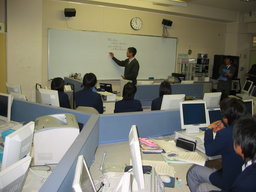
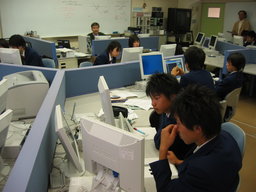
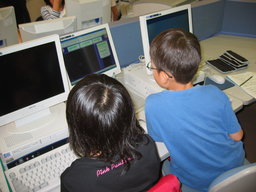
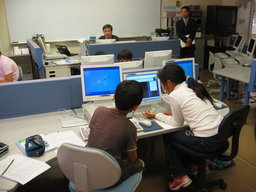
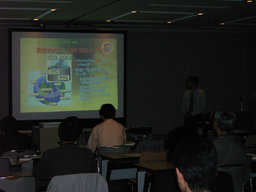
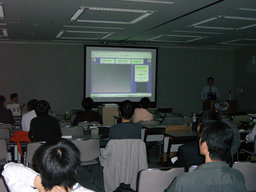
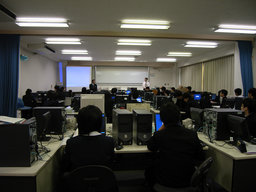
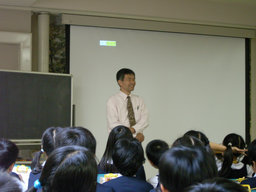
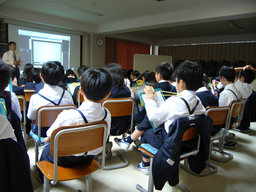
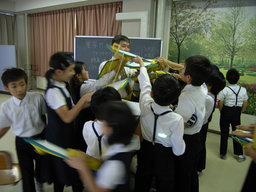
First hands-on learning opportunity with i-CAN was given to Japanese students. The images were transmitted from the first constellation camera "i-CAN" installed at Yarkes Observatory, Wisconsin, U.S.
| October 5, 2005 | |
|---|---|

|

|
| The class was held at a public junior high school in Sapporo, Northern part of Japan. The school had only one class for one grade with about 20 students. This is an appropriate class size for teaching with careful attention to individual students. | As the sky was clear on the day of the class, we could fully enjoy the star movies provided from i-CAN. In this computer room, the movie could be transmitted from the teacher”Ēs PC to the monitors shared by a pair of students. |

|

|
| On the same day, another class was given to the elementary school students in the school building next to the junior high school. They were staring curiously at the PC monitor screen. | At the junior high school, we took time to explain "celestial concept", and we tried to enjoy children with "celestial journey" at the elementary school. | October 6, 2005 |

|

|
| Completion of constellation camera "i-CAN" was reported in the autumn meeting of Astronomical Society of Japan held on October 6 through 8 at Sapporo Convention Center. At the beginning, the basic project plan was explained. | We demonstrated real-time celestial journey with i-CAN installed at Yerkes Observatory. | October 7, 2005 |

|

|
| We visited the junior high school attached to a national university for the first time in two years. As stars were not clearly shown with i-CAN due to cloudy weather at Yerkes Observatory, we took time to explain celestial sphere. | On the same day, we visited the elementary school as well. The class was given using the images from "nightskylive.net" to explain it is nighttime in countries on the other side of the world during the daytime in Japan. |

|

|
| Though the images were not so clear due to cloudy weather, students seemed to have fun seeing panoramic view from the roof of Yerkes Observatory using i-CAN. | Many students asked me for autograph after class! Through communications with students, we felt i-CAN has a great potential to bring stars closer to children, and our responsibility is to realize it by increasing the number of i-CAN sites to make the star observation more accessible to the public. |